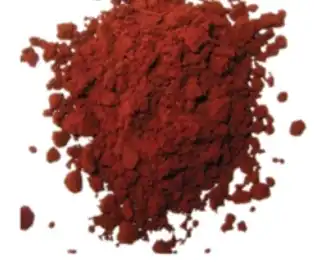How is Bulk Astaxanthin Powder Extracted?
Astaxanthin, a powerful antioxidant carotenoid, has gained significant attention in recent years due to its numerous health benefits. As demand for this vibrant red pigment grows, understanding the extraction process of bulk astaxanthin powder becomes increasingly important. In this comprehensive guide, we'll explore the various methods used to extract astaxanthin from its natural sources and the steps involved in producing high-quality powder for commercial use.
What roles do enzymatic and ultrasonic extraction play?
Enzymatic and ultrasonic extraction methods have emerged as innovative techniques for obtaining astaxanthin from various sources, particularly microalgae like Haematococcus pluvialis. These methods offer several advantages over traditional extraction processes, including increased yield and improved efficiency.
Enzymatic extraction utilizes specific enzymes to break down cell walls and release astaxanthin from within the algal biomass. This gentle approach helps preserve the integrity of the astaxanthin molecules while minimizing the use of harsh chemicals. The process typically involves the following steps:
- Pretreatment of algal biomass to increase cell wall permeability
- Addition of carefully selected enzymes to digest cell walls
- Incubation under controlled temperature and pH conditions
- Separation of the astaxanthin-rich extract from cellular debris
Ultrasonic extraction, on the other hand, employs high-frequency sound waves to disrupt cell structures and facilitate the release of astaxanthin. This method offers several benefits:
- Reduced extraction time compared to conventional methods
- Lower energy consumption
- Improved extraction efficiency, especially for heat-sensitive compounds
- Enhanced mass transfer, leading to higher yields
The ultrasonic extraction process typically involves the following steps:
- Suspension of algal biomass in a suitable solvent
- Application of ultrasonic waves at optimized frequency and duration
- Filtration or centrifugation to separate the astaxanthin-rich extract
- Further purification and concentration of the extract
Both enzymatic and ultrasonic extraction methods can be used independently or in combination to achieve optimal results. These techniques have shown promising results in laboratory-scale studies and are gradually being adapted for larger-scale production of bulk astaxanthin powder.
Solvent-based vs supercritical CO₂ extraction methods
When it comes to extracting astaxanthin on a commercial scale, two primary methods dominate the industry: solvent-based extraction and supercritical CO₂ extraction. Each method has its own set of advantages and considerations, making them suitable for different production scenarios.
Solvent-based extraction is a traditional method that has been widely used in the production of bulk astaxanthin powder. This process typically involves the following steps:
- Selection of an appropriate solvent (e.g., acetone, ethanol, or hexane)
- Mixing of the solvent with the astaxanthin-rich biomass
- Agitation and heating to facilitate extraction
- Filtration to separate the solvent-extract mixture from solid residues
- Solvent evaporation to concentrate the astaxanthin extract
- Further purification steps to remove impurities
Advantages of solvent-based extraction include:
- Well-established and widely used method
- Relatively low equipment costs
- High extraction efficiency for lipophilic compounds like astaxanthin
However, solvent-based extraction also has some drawbacks:
- Potential for solvent residues in the final product
- Environmental concerns related to solvent use and disposal
- Higher energy consumption due to solvent recovery processes
Supercritical CO₂ extraction, on the other hand, has gained popularity as a more environmentally friendly and efficient alternative. This method utilizes carbon dioxide in its supercritical state, where it exhibits properties of both a liquid and a gas. The process typically involves the following steps:
- Pressurization and heating of CO₂ to reach its supercritical state
- Passing of supercritical CO₂ through the astaxanthin-rich biomass
- Dissolution of astaxanthin and other lipophilic compounds in the CO₂
- Depressurization to separate the extracted compounds from CO₂
- Collection and further processing of the astaxanthin-rich extract
Advantages of supercritical CO₂ extraction include:
- No toxic solvent residues in the final product
- Lower environmental impact due to CO₂ recycling
- Preservation of heat-sensitive compounds
- High selectivity for lipophilic compounds like astaxanthin
However, supercritical CO₂ extraction also has some limitations:
- Higher initial equipment costs
- Potential for co-extraction of unwanted compounds
- Complexity in process optimization and scale-up
The choice between solvent-based and supercritical CO₂ extraction methods often depends on factors such as production scale, desired product purity, regulatory requirements, and environmental considerations.
Downstream steps: purification, spray-dry & crystallization
After the initial extraction of astaxanthin, several downstream processing steps are crucial to produce high-quality bulk astaxanthin powder suitable for commercial applications. These steps ensure the removal of impurities, concentration of the active compound, and conversion into a stable, easily handled form.
Purification is a critical step in the production of bulk astaxanthin powder. The primary goals of purification are to remove unwanted compounds and increase the concentration of astaxanthin. Common purification techniques include:
- Liquid-liquid extraction: Separating astaxanthin from other compounds based on their solubility in different solvents
- Chromatography: Using various chromatographic techniques (e.g., column chromatography, HPLC) to separate astaxanthin from other pigments and impurities
- Membrane filtration: Employing specialized membranes to selectively separate astaxanthin based on molecular size
- Saponification: A chemical process to remove unwanted lipids and improve astaxanthin purity
The choice of purification method depends on factors such as the initial extract composition, desired purity level, and intended application of the final product.
Spray-drying is a widely used technique for converting liquid astaxanthin extracts into a dry powder form. This process offers several advantages:
- Rapid drying with minimal heat exposure, preserving astaxanthin's stability
- Production of fine, uniform particles with excellent flowability
- Improved shelf life and easier handling of the final product
- Potential for microencapsulation to enhance stability and bioavailability
The spray-drying process typically involves the following steps:
- Preparation of a liquid feed containing the astaxanthin extract and suitable carriers (e.g., maltodextrin, gum arabic)
- Atomization of the liquid feed into fine droplets
- Exposure of droplets to hot air in a drying chamber
- Rapid evaporation of moisture, resulting in dry powder particles
- Collection of the powder in a cyclone separator or bag filter
Crystallization is another important downstream process, particularly for producing high-purity astaxanthin suitable for pharmaceutical or nutraceutical applications. This process involves:
- Concentration of the purified astaxanthin solution

- Controlled cooling or addition of an antisolvent to induce crystal formation
- Separation of astaxanthin crystals from the mother liquor
- Washing and drying of the crystals
Crystallization offers several benefits:
- Production of highly pure astaxanthin (>95% purity)
- Enhanced stability compared to amorphous forms
- Easier handling and precise dosing in formulations
The choice between spray-drying and crystallization often depends on the intended application and purity requirements of the final bulk astaxanthin powder.
In conclusion, the extraction and processing of bulk astaxanthin powder involve a complex series of steps, each crucial for producing a high-quality final product. From innovative extraction methods like enzymatic and ultrasonic techniques to advanced downstream processes such as spray-drying and crystallization, the astaxanthin industry continues to evolve to meet growing demand and stringent quality standards.
As a leading provider of natural ingredients for the health and wellness industry, Angelbio is at the forefront of astaxanthin production technology. Our commitment to innovation and quality ensures that we deliver premium bulk astaxanthin powder to meet the diverse needs of our clients in the nutritional supplement, cosmetic, and pharmaceutical sectors. Whether you're looking for high-purity crystalline astaxanthin or microencapsulated powder for enhanced stability, our team of experts is ready to assist you in finding the perfect solution for your product development needs.
Ready to elevate your products with premium bulk astaxanthin powder? Contact our experienced team at angel@angelbiology.com to discuss your specific requirements and discover how Angelbio's cutting-edge astaxanthin solutions can benefit your business. Let's work together to create innovative, health-promoting products that stand out in the competitive market.
References
1. Johnson, E.A., & An, G.H. (1991). Astaxanthin from microbial sources. Critical Reviews in Biotechnology, 11(4), 297-326.
2. Miki, W. (1991). Biological functions and activities of animal carotenoids. Pure and Applied Chemistry, 63(1), 141-146.
3. Naguib, Y.M. (2000). Antioxidant activities of astaxanthin and related carotenoids. Journal of Agricultural and Food Chemistry, 48(4), 1150-1154.
4. Guerin, M., Huntley, M.E., & Olaizola, M. (2003). Haematococcus astaxanthin: applications for human health and nutrition. Trends in Biotechnology, 21(5), 210-216.


